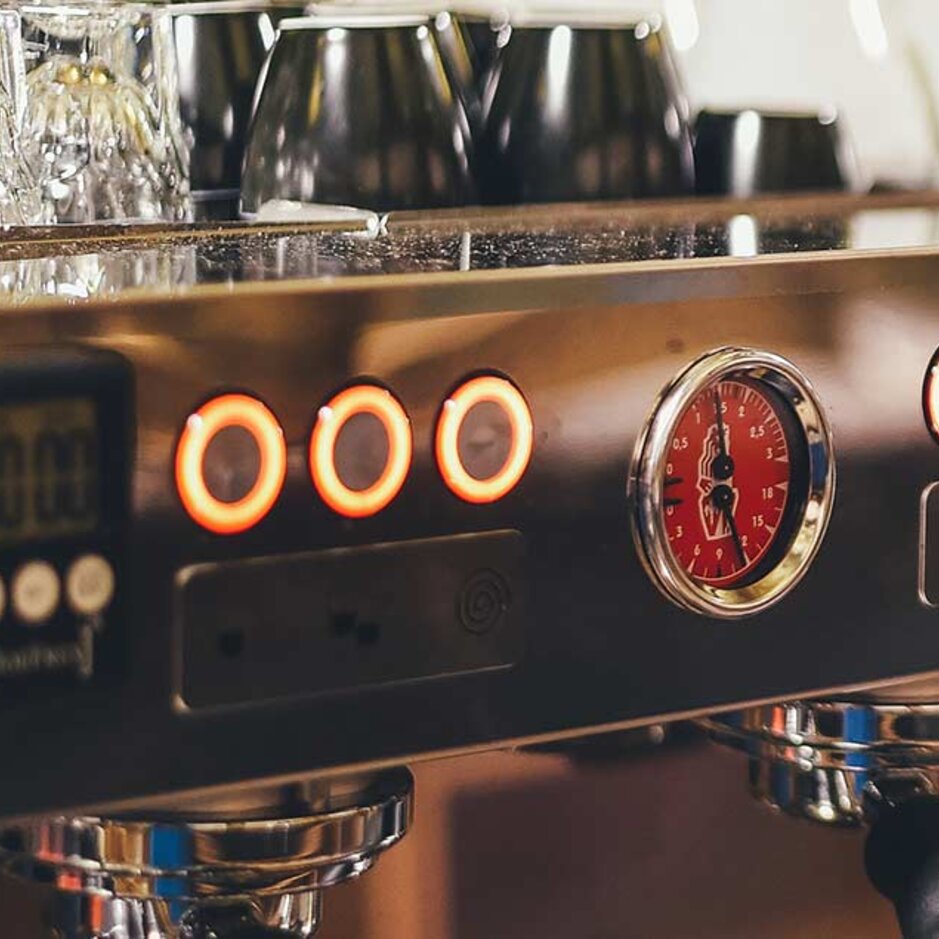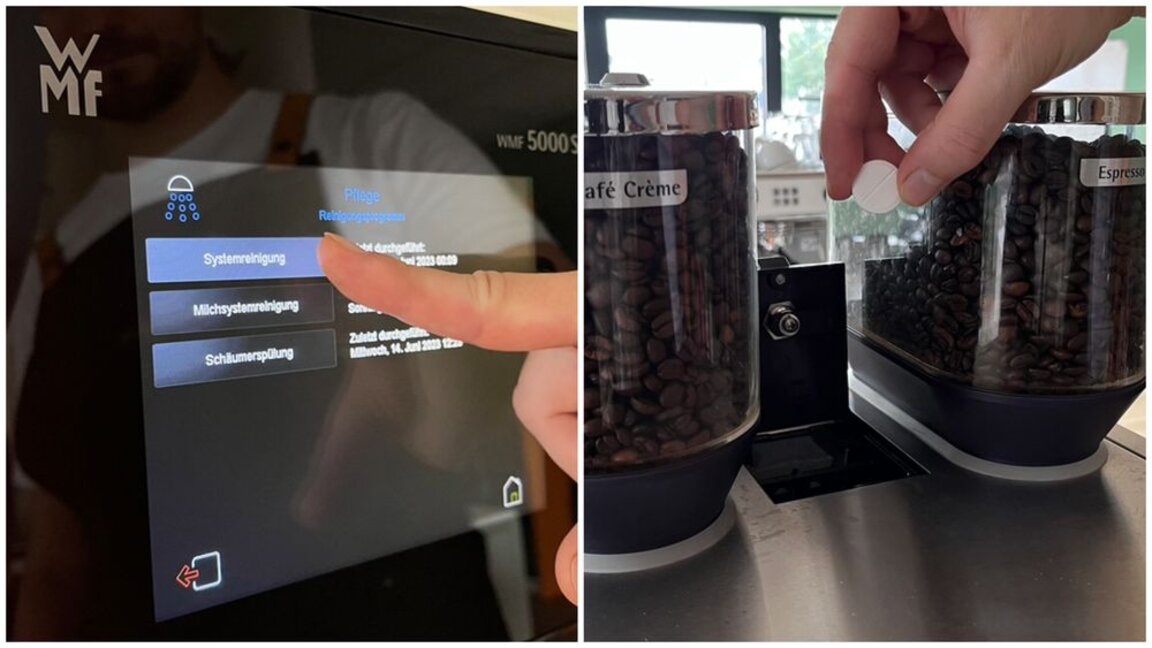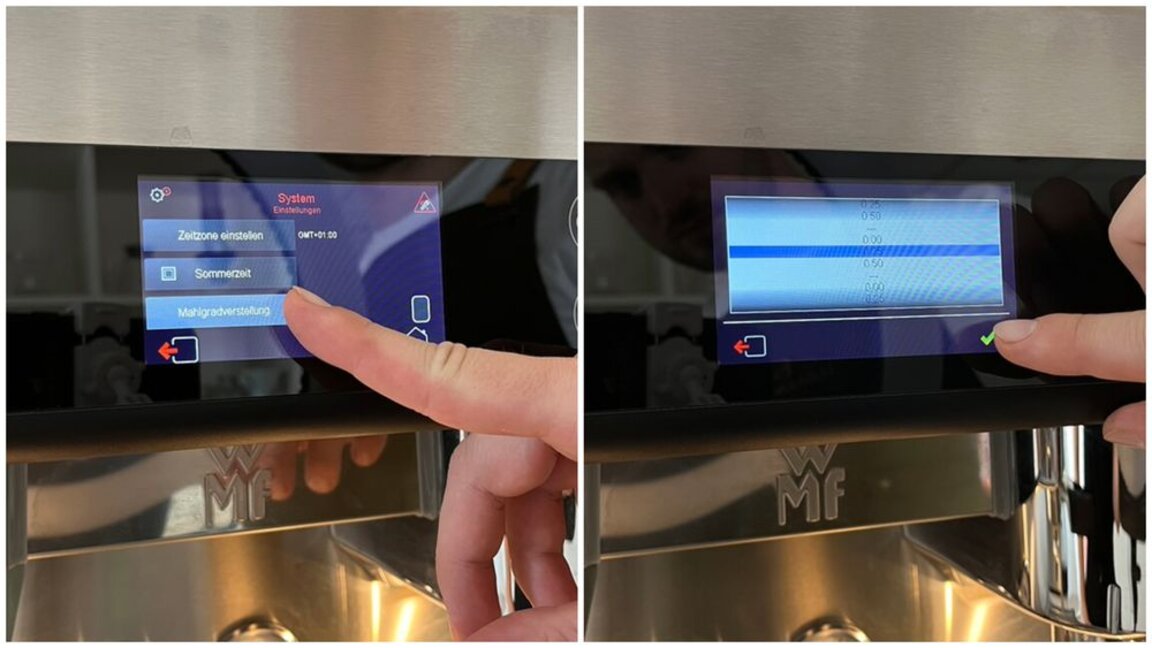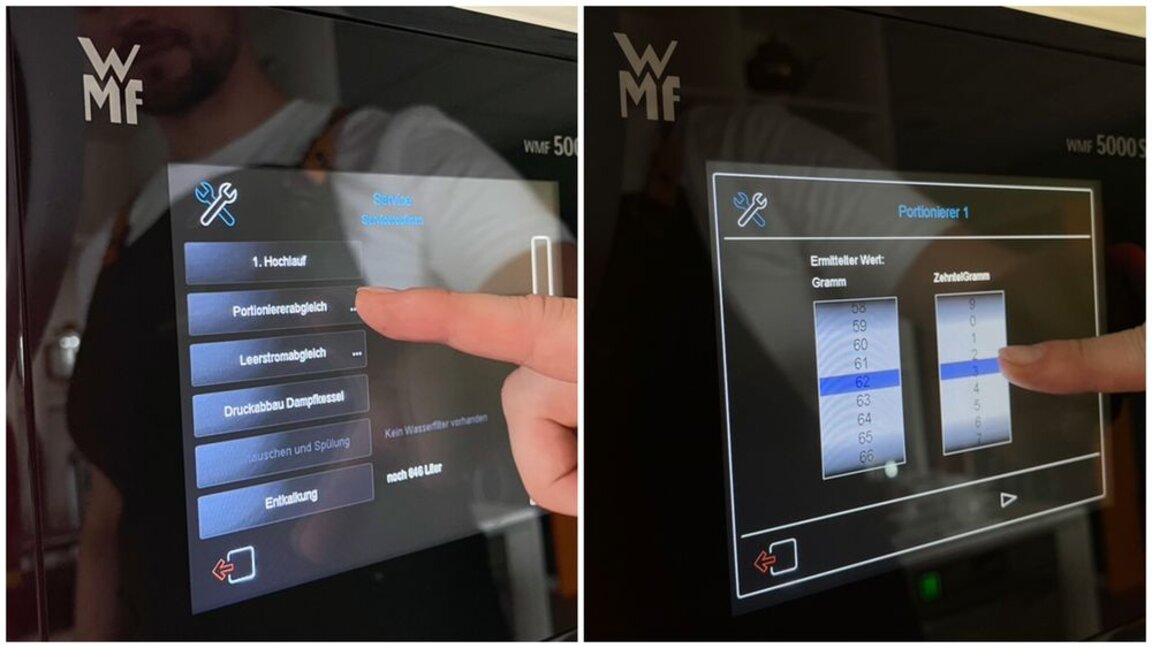When we talk about the configuration of the fully automatic coffee machine, we are primarily talking about extraction parameters of coffee. In terms of extraction parameters, the same parameters apply to a fully automatic coffee machine as to a standard portafilter machine. This is hardly surprising, as the brewing pressure and water temperature of a fully automatic machine are no different from those of a portafilter machine.
As a rule of thumb an espresso should take between 20 and 30 seconds to extract, a café crème around 40 seconds. Only with reasonable extraction times does the water have enough time to extract the necessary amount of soluble substances from the ground coffee (extraction means nothing other than extraction).
In order to achieve these extraction times, it is essential to use the correct grinding degree and the right amount of powder in each case. Together, the degree of grinding and the amount of powder define the resistance that the water presses against with its brewing pressure. The finer the grind and the more coffee in the brewing chamber, the greater the resistance and the longer the extraction time.
The degree of grinding can be adjusted on modern fully automatic coffee machines via the settings menu finer or coarser. On slightly older machines, the setting can still be made manually. It is important to start a grinding process after each adjustment of the grinding degree and to discard the ground coffee. This is because there are always grinding residues from the previous grinding process, which was carried out with a different grind setting, in the dead space of the grinder. Accordingly, this ground coffee would only be partially representative of the new grind.
At first glance, the amount of ground coffee can be easily adjusted via the Beverage configuration menu menu. But be careful: just because the menu shows a certain amount of coffee does not mean that exactly this amount of coffee will come out of the grinder. Fully automatic coffee machines work with timer-controlled grinders. The set weight is converted by the fully automatic coffee machine into a into a specific grinding timeso a kind of conversion takes place. It is very important that this weight is recalibrated if the grind is changed. During calibration, the fully automatic coffee machine grinds the coffee at the set grinding degree for a certain time (e.g. 5 seconds). You must then weigh how much coffee the grinder has ground during this time (e.g. 14 g).
The weight is stored in the fully automatic machine and the fully automatic coffee machine can then extrapolate the grinding time required to achieve the amount of powder set in the beverage configuration (e.g. 15.5 g for a double espresso). Calibration must always be carried out when the grinding degree is changed. This is because with a finer grind, the grinding disks are closer together, meaning that fewer coffee beans can be ground in the specified time than with a coarser grind, where the grinding disks are correspondingly further apart.



